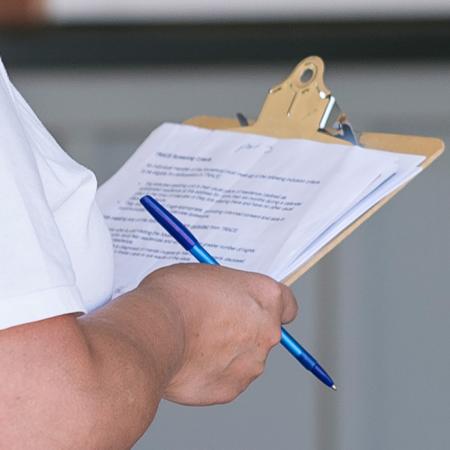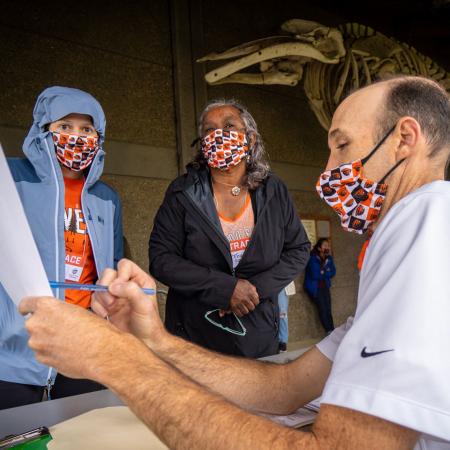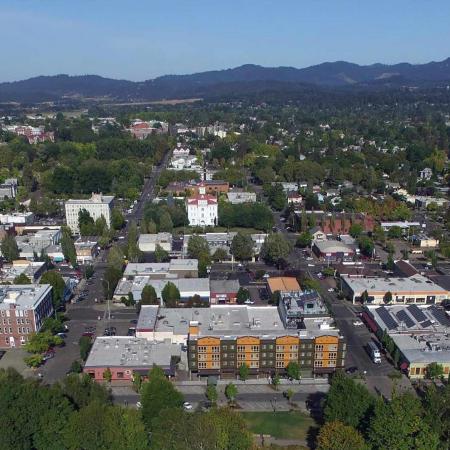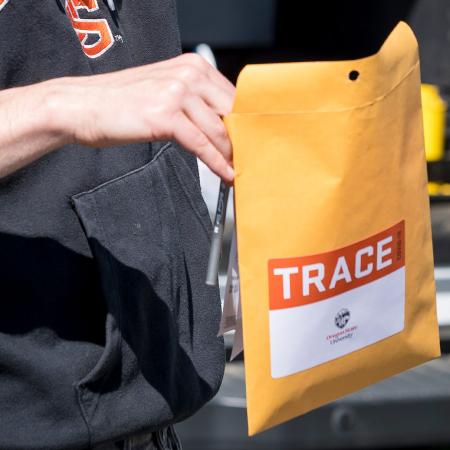CORVALLIS, Ore. – Scientists and students from Oregon State University and the University of Oregon are teaming up to bring OSU’s TRACE Community COVID-19 public health project to Eugene the weekend of Nov. 7 and 8 at the request of Lane County Public Health.
Over the two days, three-person crews will visit 30 neighborhoods in the city and invite as many as 600 Eugene residents to take place in nasal swab sampling for SARS-CoV-2, the novel coronavirus that causes COVID-19. Each crew will consist of an Oregon State student, a University of Oregon student and a health professional.
“We are very excited to collaborate with the University of Oregon and work together as public research universities to help our state and communities confront the COVID-19 challenge,” said TRACE project leader Ben Dalziel, an assistant professor in the OSU College of Science. “This collaboration demonstrates the combined strengths of both universities and their commitment to serve Oregonians, especially during this critical time.”
Eugene has a population of 172,000, nearly half of Lane County’s population of 382,000. Lane County has reported 27 COVID-19 fatalities and 2,454 cases – including 35 new ones on Wednesday.
“We are pleased to partner with our colleagues at OSU on this important initiative,” said Leslie Leve, associate vice president for research and professor in the College of Education. “TRACE Community work complements the screening testing activities provided by UO’s Monitoring and Assessment Program (MAP) by incorporating community surveillance to provide an estimate of the prevalence of COVID-19 city-wide in Eugene.”
OSU’s TRACE Community has performed community-wide door-to-door sampling in Corvallis five times, in Newport twice, and in Bend and Hermiston once, as well as wastewater analysis for indications of the virus in those communities.
OSU researchers have also conducted weekly testing of Corvallis community wastewater since May and expanded those efforts to Newport, Bend and Hermiston too. The wastewater work will also be a component of the TRACE effort in Lane County. While neighborhoods throughout Eugene are sampled on Nov. 7 and 8, researchers from OSU and UO will collaborate with city officials to collect wastewater samples from the cities of Eugene and Springfield to further estimate the prevalence of the virus.
Going door-to-door, TRACE Community field workers will invite members of each household they visit to participate in the project. Those who choose to take part will be asked to provide information such as their name and date of birth; fill out a simple consent form; and answer a few confidential, health-related questions.
Participants will be given a nasal-swab test kit that they administer to themselves inside their home and to their minor children if they want them to take part. The field staff will wait outside, and the participants will leave the completed test kits outside their front door.
The field workers will leave participants with information about the project and how they will receive their results – available in five to 10 days – as well as health guidance from Lane County Public Health and the Centers for Disease Control and Prevention. Participants in the effort will receive their results and those of their minor children by secure email with receipt by mail as a backup. Personal information will be safeguarded.
“Even with recent prevalence results, community members should continue to pay close attention to social distancing and follow the state of Oregon’s face-covering mandate that began earlier this month,” said Javier Nieto, dean of OSU’s College of Public Health and Human Services and another of TRACE’s leaders. “Other measures, such as avoiding large gatherings, also help slow the spread of the virus. It is particularly important that individuals who have symptoms or who have tested positive follow state and county health guidelines such as self-isolating and seeking medical care.”
TRACE co-leader Jeff Bethel, an associate professor in OSU’s College of Public Health and Human Sciences, said understanding the estimated prevalence of COVID-19 in Eugene comes at an important time.
“Willamette Valley weather is quickly growing cooler and soon will become rainy,” Bethel said “With all of us spending a lot more time indoors, we must be extra cautious and vigilant in observing our own health symptoms and following public health guidelines, such as engaging in social distancing, frequently washing our hands, wearing face coverings and limiting attendance at social get-togethers.”
The TRACE-COVID-19 project began as a collaboration of five OSU colleges – Science, Agricultural Sciences, the Carlson College of Veterinary Medicine, Engineering, and Public Health and Human Sciences – plus the OSU Center for Genome Research and Biocomputing. The project has worked in partnership with the Benton County Health Department in Corvallis and other county health departments around the state.
The diagnostic testing component of TRACE operates through a partnership between the Oregon Veterinary Diagnostic Laboratory, which is located at OSU, and Willamette Valley Toxicology.
“Lane County Public Health is grateful for the opportunity to work with our partners at OSU and UO to better understand how COVID-19 is moving through our community and in doing so, improve the overall health of Lane County,” said Dr. Patrick Luedtke, the county’s senior public health officer. “We count ourselves as fortunate to have the expertise and skill for this work in partners like UO and OSU.”
TRACE-COVID-19 has received funding from OSU, the David and Lucile Packard Foundation, PacificSource Health Plans and the Oregon Health Authority and has been aided by work from the OSU Foundation and the OSU Alumni Association. Funding for TRACE Community testing in Eugene is being funded by PacificSource, which is based in Springfield.
For more information about TRACE, visit the TRACE-COVID-19 website. The site includes a list of frequently asked questions.
This story was originally posted by the Oregon State University newsroom.




